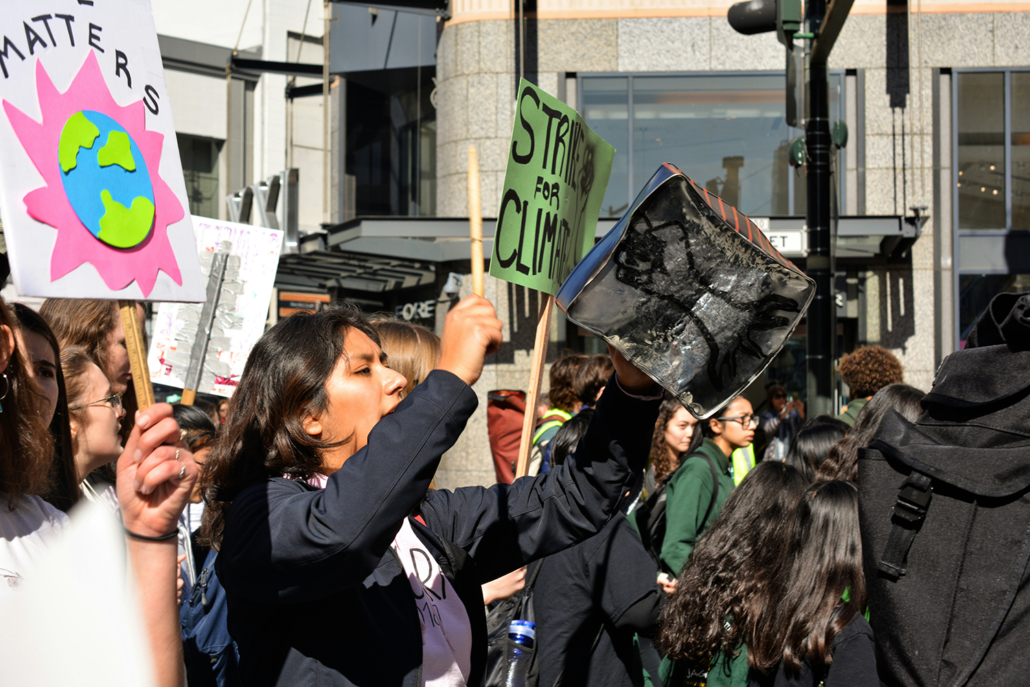Across Canada, Indigenous youth are emerging as powerful voices in the fight against climate change. Combining traditional knowledge with modern activism, these young leaders are not just participating in the climate movement – they’re reshaping it, bringing Indigenous perspectives to the forefront of environmental discussions.
The Rise of Indigenous Youth Climate Activists
In recent years, Indigenous youth have become increasingly visible and vocal in climate activism, both within their communities and on the national and international stage.
Autumn Peltier: The Water Warrior
Autumn Peltier, an Anishinaabe teen from Wiikwemkoong First Nation on Manitoulin Island, has gained international recognition for her advocacy for clean water. Since the age of eight, Peltier has been speaking out about the importance of protecting water resources, addressing the United Nations General Assembly at age 13.
“We can’t eat money or drink oil,” Peltier often says, encapsulating the Indigenous perspective that prioritizes environmental stewardship over short-term economic gain.
Shannen Koostachin: Education and Environment
While not specifically focused on climate change, the legacy of Shannen Koostachin, a youth education advocate from Attawapiskat First Nation, has inspired many Indigenous youth to speak up for their rights, including environmental rights. The Shannen’s Dream campaign, which continues after her tragic passing, links quality education with the ability to advocate for Indigenous lands and rights.
Bridging Traditional Knowledge and Modern Activism
What sets Indigenous youth climate leaders apart is their ability to bridge traditional ecological knowledge with contemporary climate science and activism.
Ta’Kaiya Blaney: Combining Tradition and Advocacy
Ta’Kaiya Blaney, a youth activist from the Tla’amin First Nation in British Columbia, exemplifies this bridging of worlds. Blaney combines traditional songs and stories with a sharp critique of fossil fuel projects, demonstrating how Indigenous cultural practices are inherently tied to environmental protection.
“Our traditional laws and our connection to the land aren’t relics of the past,” Blaney explains. “They’re living guidelines for how to address the climate crisis.”
Youth-Led Initiatives in Communities
Beyond high-profile activism, Indigenous youth are leading grassroots initiatives in their communities to address climate change impacts and promote sustainable practices.
The Native Youth Sexual Health Network’s Environmental Justice Program
The Native Youth Sexual Health Network is a youth-led organization that links environmental justice with Indigenous rights and health. Their initiatives include workshops on the impacts of resource extraction on Indigenous communities and youth-led community gardens that promote food sovereignty.
We Matter Campaign: Mental Health and Climate Resilience
Recognizing the mental health impacts of climate change on Indigenous youth, the We Matter campaign, founded by Kelvin and Tunchai Redvers, provides support and resources. They emphasize the connection between land, culture, and mental well-being in the face of environmental changes.
Challenges and Resilience
Indigenous youth climate leaders face unique challenges, including the intergenerational trauma of colonization and the disproportionate impacts of climate change on their communities.
Eriel Deranger, Executive Director of Indigenous Climate Action and a mentor to many youth activists, notes, “These young leaders are not just fighting climate change; they’re battling centuries of systemic oppression while trying to revitalize their cultures. Their resilience is remarkable.”
The Impact on Policy and Public Discourse
The voices of Indigenous youth are increasingly influencing climate policy and public discourse in Canada.
Inclusion in Policy Discussions
Many government bodies and environmental organizations are now actively seeking input from Indigenous youth. For example, the Assembly of First Nations National Youth Council has been instrumental in shaping the AFN’s climate strategy.
Changing the Narrative
Indigenous youth activists are changing how climate change is discussed in Canada, emphasizing the interconnectedness of environmental, cultural, and social issues.
Gabrielle Fayant, co-founder of the Assembly of Seven Generations, explains, “We’re bringing a holistic perspective to climate discussions. It’s not just about reducing emissions; it’s about restoring right relationships with the land and with each other.”
Education and Empowerment
Supporting and amplifying Indigenous youth voices in climate action is crucial. Many initiatives focus on empowering young leaders:
The Jane Goodall Institute’s Roots & Shoots program has partnered with Indigenous communities to support youth-led environmental projects.
The Canadian Roots Exchange facilitates youth exchanges and leadership programs that often focus on environmental stewardship.
Looking to the Future
As these young leaders grow and develop, their impact on Canada’s approach to climate change is likely to increase. They represent not just the future of Indigenous climate advocacy, but a new generation of Canadian leadership that centers Indigenous rights and knowledge in environmental protection.
A New Generation of Earth Protectors
Indigenous youth climate leaders are not just participating in the climate movement; they’re transforming it. By bringing traditional knowledge, cultural values, and a rights-based approach to climate activism, these young leaders are reshaping how Canada – and the world – thinks about and addresses climate change.
Their message is clear: effective climate action must respect Indigenous rights, draw on traditional knowledge, and address the interconnected issues of environmental, cultural, and social justice.
As Autumn Peltier said in her address to the UN, “One day I will be an ancestor, and I want my great-grandchildren to know I tried hard to fight so they can have clean drinking water.” This sentiment encapsulates the forward-thinking, generations-focused approach that Indigenous youth are bringing to the climate movement – an approach that may well be key to creating a sustainable future for all.
Blog by Rye Karonhiowanen Barberstock
(Header Image Credit: Li-An Lim, Unsplash)

